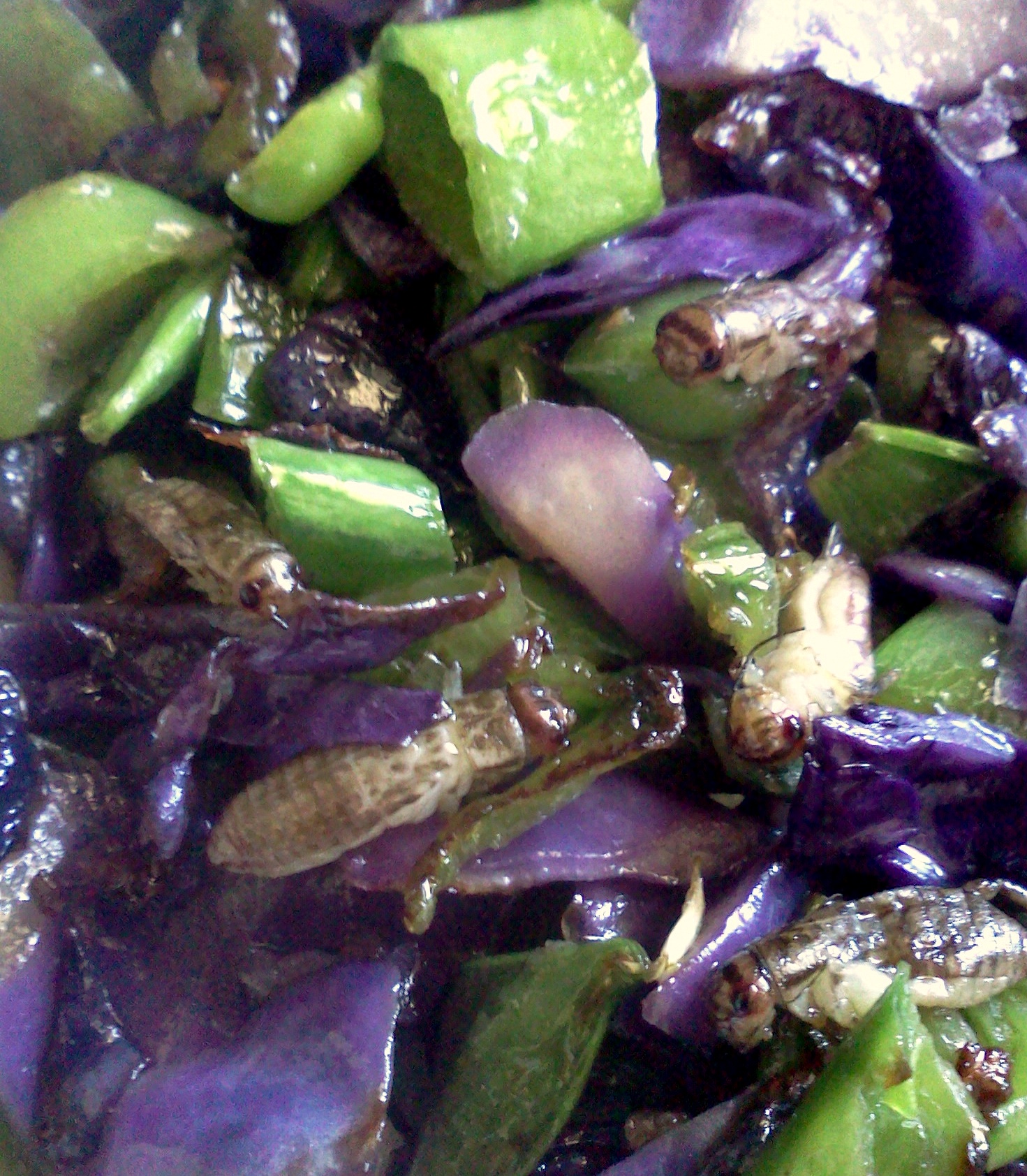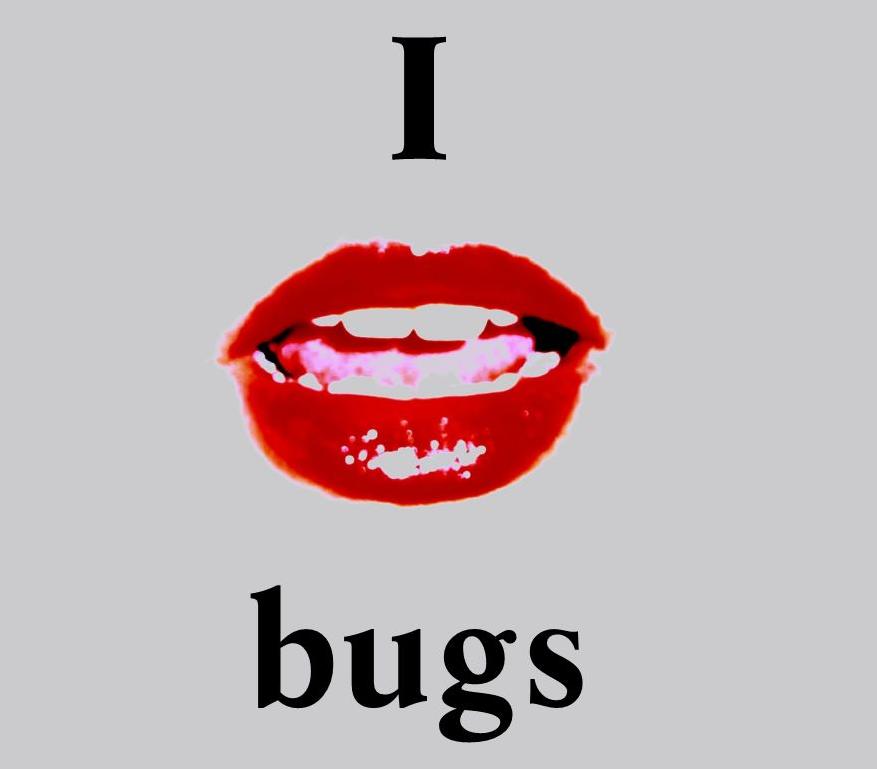We lived in Mexico City for three years in the '90s. While at a local restaurant, my husband ordered "chapulines." The waiter's eyes lit up and was very excited. We couldn't figure out why until he got back to the table with a plate full of fired crickets. We both looked down and I said, "did you mean to order crickets?" (They were in season, after all, so I thought he was being adventurous.) He said, "Oh, I got chapulines mixed up with 'chalupas.'"
I tried them anyway. He refrained. Frankly, they tasted like crunchy grass. I have to say, I come out on the "ick" factor side.
Blog Post
Girl Eats Bug: The Case for Entomophagy (Insect-Eating) and Sustainability

The Large Blue Butterfly, found in Europe, lays its eggs on a marsh gentian leaf. Its larva (a caterpillar) hatches and falls to the ground and emits a scent that smells to certain species of ant just like its own larvae. The ants carry the caterpillar back to their nest, where they not only care for it as one of their own, but as one of their own that is going to turn into a queen. Meanwhile, the caterpillar is eating the actual ant larvae and growing large.
Enter the ichneumon wasp, which can somehow detect ant colonies that have been invaded in this way. The wasp flies into the ant colony and sprays a pheromone that causes the ants to attack each other. In the melee, the wasp finds the caterpillar in the larval chamber and injects its own eggs into the caterpillar. Those eggs later hatch during the butterfly's chrysalis stage, consuming it from the inside and later coming forth as wasps.
Interactions like these between ants and other species are so common that there is a word for them: myrmecophily.
Interactions between Americans and insects are also very common, and are known by the following words: gross, EEW!, splat, and squish.
Introducing entomophagy: Eating insects
A growing number of people are trying to introduce a new concept, however: entomophagy, for entomo- (insects) plus –phagy (eat). Yes, they are suggesting that we should purposefully eat insects as food, and that there are good ethical, environmental, nutritional, and culinary reasons for doing so. I had the chance this week to talk with Daniella Martin, host of the website GirlMeetsBug.com, and a leading teacher and promoter of the topic. Although it's difficult to know for sure, Daniella quotes a common estimate that 80% of the world practices insect-eating--and as a delicacy, not just "famine food." Why, I asked her, are Americans so squeamish about something that is so commonly accepted elsewhere?
SUPPORT INDEPENDENT SUSTAINABILITY REPORTING
BuildingGreen relies on our premium members, not on advertisers. Help make our work possible.
See membership options »"Every culture has its identity," she told me. "For Muslims, not eating pork is part of their identity--for Hindus, not eating beef. For most Americans, by the time we are 9 or 10 years old we don't even remember where we got the idea that bugs are gross. It's simply part of our cultural identity to not eat bugs."
Did we evolve to eat bugs?
Daniella is convinced that this "cultural thing" goes against our nature: insects are "a deeply native food." She asked, "If you think of primates using their first tools, what do you think of?" I thought of of chimps using sticks to get termites out of their nests, and then devour them. Daniella describes herself as someone with food issues--lactose-intolerant, allergic to alcohol, but she has never had a problem eating insects. "It feels from an organic level that we are biologically evolved to eat bugs," she says.
If you don't feel that you were evolved to dip into some grubs, there are some other reasons why you might consider it.
Nutritional value: off the charts

Our main animal protein sources are pigs, chickens, cows and fish, with each animal and cut of meat providing a unique nutritional profile. According to Daniella, the same is true in the insect world. The flavors vary incredibly from red ants to silk worm pupae to crickets to grasshoppers, and so does nutritional value.
Per 100 grams of lean beef, you can get 27.4 grams of protein and 3.5 mg of iron. The same quantity of caterpillars would give you 28.2 grams of protein and 35.5 mg of iron, with little fat. Crickets offer 12.9 grams of protein, 5.5 grams of fat, 5.1 grams of carbs, and an incredible 75.8 mg of calcium. As you can see, it's not just about protein, as people commonly think.
According to Martin, athletes and body builders who eat "scientifically" are very predisposed to insects, because of the variety of nutritional value offered, and the fact that it's packaged as a whole food, not just an isolated supplement.
Efficiency at converting feed to food
Insects are much more efficient than other forms of livestock at converting food and water into edible body mass. Says Daniella, "Many commonly farmed insect species require several times less food, 100 times less land space, and 1,000 times less water than beef to create the same amount of food." While cows spend a lot of their energy just staying warm, insects are ectotherms, or cold-blooded creatures. Insects contribute far fewer greenhouse gases like methane to the atmosphere than livestock do, and don't require deforestation or other development. Cattle-farming, by contrast, is the cause of 70% of deforestation, according to common figures, and is a larger contributor to global warming than driving cars.
Bugs require so little space that an insect farm can be started in a closet or an old 55-gallon drum, and insects can be raised on food that people throw away: leaves, food scraps, and bran, for example.
While our common livestock are stressed out and made sick by factory-farming conditions, insects are accustomed to being raised in tight quarters, and can be farmed in great density without apparent stress. As ectotherms, they are killed by cold temperatures. Daniella puts insects she farms or traps into a jar in the freezer, (saying a brief prayer, she notes), killing them. They then come out of the freezer and into the frying pan, oven, or wok.
I stopped by the local outdoor outfitters today for a butterfly net--they didn't have one, but they did sell me a finely meshed fishing net. While she's visiting us, Daniella is hoping to use it to catch some local grasshoppers or crickets, which she says you can treat pretty much like shrimp. I am hoping to get over the "ew" factor. How about you?

Update: I got over it. Sauteed, local grasshoppers are great! And waxmoth larvae make a great snack.
Images: Daniella Martin
Published October 3, 2011 Permalink Citation
(2011, October 3). Girl Eats Bug: The Case for Entomophagy (Insect-Eating) and Sustainability. Retrieved from https://www.buildinggreen.com/news-article/girl-eats-bug-case-entomophagy-insect-eating-and-sustainability
Comments
We lived in Mexico City for t
I am more interested in your
I am more interested in your current explorations!
Waxmoth larvae?
When maintaining my beehives, I occasionally pick them out of the comb before they cause havoc in the hive. I used to feed them to the chickens who loved them!
Now chickenless, I just crush them.
Question is, raw or cooked?



Add new comment
To post a comment, you need to register for a BuildingGreen Basic membership (free) or login to your existing profile.